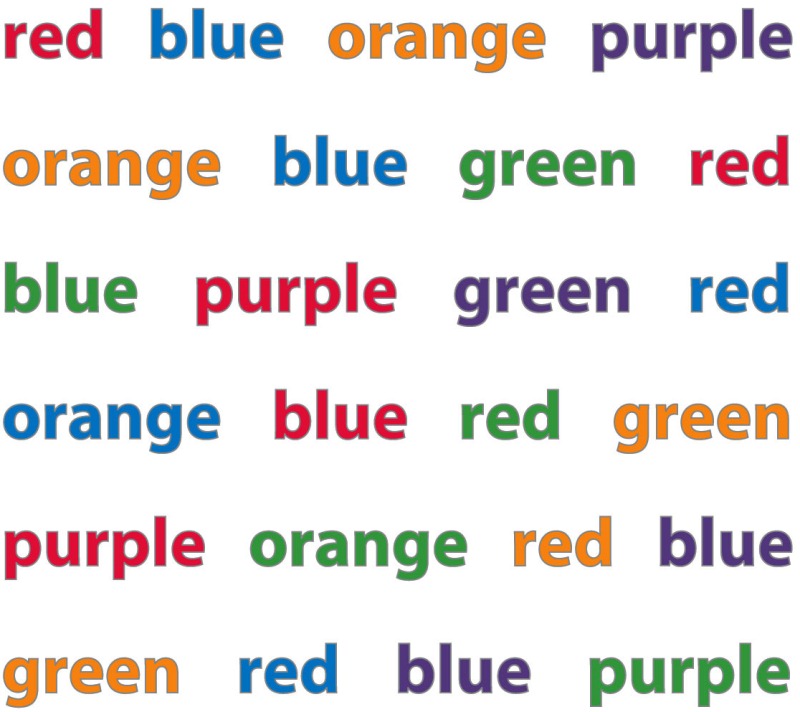Psychology 1
PREVIOUS: Memory
Cognition is the way that we think and use knowledge. It’s the compilation of our thoughts, perspectives, and expectations. It entails:
- knowing
- remembering
- understanding
- communicating
- learning
We like to think that we’re great at these things and like computers, but we are absolute trash at thinking logically and rationally.
Ideas of Cognition
Throughout our day, we constantly sense different sights, sounds, smells, etc. Attention is the tendency to respond to and remember some stimuli more than others. In bottom-up processes we change our attention to flashing blinking lights because the peripheral stimuli changed our attention. When we decide to shift our attention, it is called a top-down process.
If we were looking for a friend, wearing a red shirt at Amtrak as everyone is coming out of the train, it might be easier to spot a red shirt among most people, known as a preattentive process, since it stands out immediately. But if your friend is wearing a green shirt after the A’s game, you might have to search through every single person to determine if it is your friend or not–an attentive process, where you have to search through the items in a series.
The Stroop Effect describes our tendency to read words instead of saying the color the ink.

We also fail to detect changes when we see two pictures that look the same, known as change blindness. Some of us also be distracted easily, attention deficit disorder (ADD) or attention deficit hyperactivity disorder (ADHD). But all of attention leads to the natural grouping of the things that we see from our day to day lives. Rather than creating a separate category for every species of bird that we come across, we just generally group, categorize them into concepts. These concepts can be broken down into a tree-like structure or a giant graph of all the interconnected ideas and concepts that we have.
Within each concept, we tend to create a prototype of the concept, or a mental image or pinnacle example. But we use all of these ideas to solve problems.
Algorithms, Heuristics
Algorithms: logical, methodical, step-by-step procedures that guarantees a solution, though usually slow. Searching each individual aisle of the store for banana milk Heuristics: mental shortcuts or strategies to help us solve problems faster, based on our prior knowledge. Searching the snack aisle for the banana milk
These are both problem solving strategies, along with trial and error, and help us solve the problems that we encounter in our lives.
Some heuristics that we use:
- Representative Heuristic: assumption that an item resembles members of a category is probably also in that category. Most liberals think like x, y, z, a, b, c. Since Josh agrees with x, y, z, a, b, he’s a liberal!
- Availability Heuristic: the more easily we can think of members of a category, the more common the category is. We remember more airplane crashes than car crashes, so we think that air travel is more dangerous
Heuristics, obviously, have room to fail. They don’t cover edge cases, which is why we use algorithms. Other sources of error that we have in problem solving are confirmation bias, where we accept a hypothesis and then look for evidence to support it (instead of looking into other possibilities), and the framing effect, where the way we frame a question will change how we answer it Our of 600 people, this medication will save 200. && Out of 600 people, taking the medication will kill 400, or the sunk cost effect, where we are willing to do something irrational because of something that was previously spent or invested into it. not buying a new gas efficient car because we already spent so much on it
Communication and Language
Language is a combined set of spoken, written, or signed words that are combined to communicate meaning. We usually speak or write and read, but we’re also able to communicate with our hands and however else we see fit. The basic building block for language are phonemes, a unit of sound. sh a m l ess n ess These can be combined to create morphemes, prefixes, suffixes, small words shame less ness
There’s a lot of NLP stuff that’s also covered in AI, so I don’t want to go into that here. Just watch the CC video lol :(
Morphology: how words are formed–prefixes, suffixes, etc. Syntax: Grammar Semantics: meanings of words, phrases, sentences.